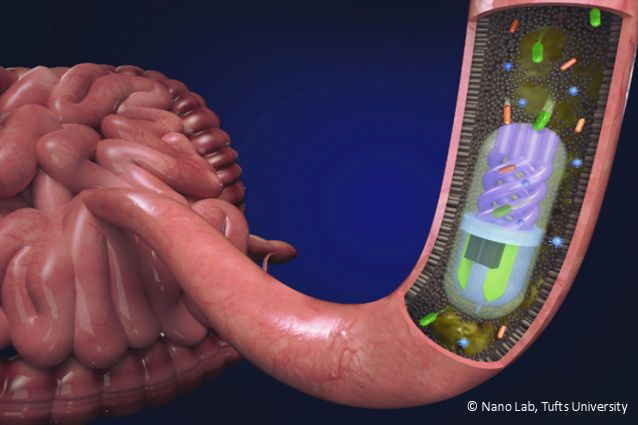Culture Media Troubl...
Viral Assay Delivers...
5th August 2019 Product update: Paul Carton
How to Collect Gut Microbiome Samples - Non Invasive 3D Pill
A multi-disciplinary approach to analysing the microbiota of the gastrointestinal tract has given researchers at Tufts University a breakthrough in medical science. The first non-invasive pill to collect all microbiota living in the GI tract down to the colon was made possible by a collaboration between the School of Veterinary Medicine and the School of Engineering at the university.
The pill, which is made by a 3-D printing machine requires no battery as it moves down the tract, utilizing the laws of nature to perform its function and leave the body without a trace. Its function, which is to collect as much microbiota it can as it passes down, is achieved by osmosis, made possible by the pill’s salt chambers. The biota flow through its porous membrane channels, drawn in by the power of osmosis and kept there in helical chambers to be analysed when it leaves the body.
When it comes to providing healthy microbiota via probiotics, the acidity of the stomach is always a troublesome hurdle to overcome. However this pill has an enteric pH sensitive coating that survives the acidic environment in the stomach created by chyme and dissolves once past this organ. The pill can then be guided by external stimuli to stay in one area for longer to collect as much from an area as possible and this is carried out by magnets, one inside the pill and the other outside being held by a professional. The pill can then be located in the faeces by UV light due to two fluorescent marks on made on the outside of the pill.
The paper ‘Ingestible Osmotic Pill for In-vivo sampling of Gut Microbiome’ was published in the latest addition to the Advance Journal series, ‘Advanced Intelligent Systems’. A new open access journal which covers artificial intelligence systems which respond to external stimuli.
Corresponding author of the study and professor of the School of Engineering Sameer Sonkusale believes the information collected by the pill regarding the spatial distribution of the microbiota that live in the GI tract can improve our understanding helping develop novel therapies for disease. Sameer already has smart inventions to his name, notably the smart bandage that was developed last year at Tufts. The bandage was designed for sufferers of chronic wounds, the majority of which are older persons. The bandage can apply therapeutic drugs when its pH and temperature sensors feed its microprocessor, the information critical for the patient’s better health.
Hojatollah Rezaei Nejad, lead author, who is a post-doctoral fellow studying novel applications of 3-D printing in Sonskusale’s laboratory, says up till now we haven’t had a way of studying these populations of bacteria non-invasively, “By sampling non-invasively, this pill could help us better identify and understand the role of different intestinal bacterial species in health and disease”, said Nejad.
As a lot of research has gone into the gut microbiome in recent times, and scientists are beginning to understand the benefit of metabolites produced by the bacteria, providing us with both protection and nutrition. A similar project is being developed by Axial biotherapeutics in California, led by Sarkis Mazmanian. Sarkis, who is in the process of developing a sponge to collect metabolites is particularly interested in the gut-brain axis and the metabolites responsible for neurotic disorders. Sarkis, states that the bacterially derived molecules are almost completely unstudied and don’t look like anything else that has been studied before.
It is a known fact that a lot of the bacteria in the gut cannot be grown in the lab, and the advent of high-throughput sequencing has allowed scientists to overcome this obstacle. Here in this paper bacteria collected by the pill are 16S sequenced and a biogeographic map of the biota of pigs and monkeys in these experiment is presented. With clinical trials, the next avenue to venture down to is establish if it can be used routinely in humans for clinical care.
Source Article: Tufts University
Tags:
Date Published: 5th August 2019
Note: This content has been edited by a rapidmicrobiology staff writer for style and content.
Culture Media Troubleshooting Videos –
Viral Assay Delivers Instant Results








